Bass Books
Bass Book Reviews: In this Issue
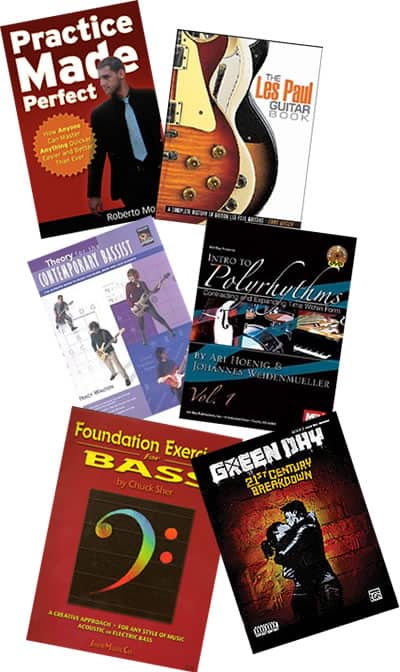
Interested in Bass Books, CD’s and DVD’s? If so, Join the discussion in the Bass Musician Magazine Community!
One of the fun things about book reviews is that I get to experience lots of interesting and varied material! That said let’s have a look at what we have in our “Book-Bag” for this issue.
“Practice Made Perfect” by Roberto Moretti.
No matter what you do, you have to practice to get good at it or to grow enough to reach your goals. This applies to Bass playing but also carries over to anything in life. Roberto has dissected the whole process and by doing so, he can help us learn to practice more effectively and easier.
We start with an explanation of how learning happens.
Next, we have a “System” that we can apply to our particular skill to enhance our practice efforts.
Lastly, Roberto covers a list of additional things to consider.
This book is an easy read and full of useful tips that I intend to apply to my practice routine as well as to life in general. It might help you too!
“The Les Paul Guitar Book” by Tony Bacon
OK, I know this is not about Basses, but in honor of Les Paul who passed last August 13th, I want to mention this book.
Here is a photo-illustrated book that covers the entire Gibson Les Paul story. Loaded with details and well organized, this tome guides you through the evolution of these guitars.
There is a massive reference listing that covers models from 1952 until 2009.
This book is a must if you are a Les Paul Guitar fan and still a good read even if you aren’t!
“Green Day… 21st Century Breakdown” music book from Alfred publishing
Are you a “Green Day” fan? Did you enjoy this CD? Do you want to play it? You read TAB?
If you answered yes to any of these questions, then this is the book for you. It covers all the music from the May 15, 2009 release quite nicely. There is no CD with this book, but then you probably already have it…Enjoy!
Now lets discuss some books that will help build your musical foundation and take you further along the path of musical growth.
“Theory for the Contemporary Bassist” by Tracy Walton
This book is intended to be ” The ultimate guide for Blues, Rock and Jazz bassists”. I think it does a great job at covering an area often overlooked…. Theory. Written to start at the beginning and using an easy, step by step approach, there is a ton of information here for you to get under your belt!
Topics covered include:
Scales, Keys and Key Signatures
Intervals
Introducing chords, 7th Chords, Expanding your Chord Vocabulary, Chord Progressions
Pentatonic Scales, Major Scales, Minor Scales
Modes of the Major scale
Passing tones and Approach Notes
The Twelve Bar Blues
Rhythm Changes
Bebop Scales revisiting Slash chords
Lastly I will point out that this book has worksheets for self-study and presents examples in Standard Music Notation as well as TAB.
“Foundation Exercises for Bass” by Chuck Sher
Here is a book that is for every kind and style of bass out there!
Beginners:
I find that this book would be best if used with a live teacher. There is a lot of very concentrated information and it is all Standard Music Notation. Working with your teacher, you can get a lot from this book.
Intermediate level players:
The content here is designed to help you improve if you already have some kind of foundation.
This book is structured so it can be used in lessons and offers the flexibility to be custom tailored to each students needs.
So, all you teachers out there, you might want to check this one out to see if it fits with your teaching approach!
“Intro to Polyrhythms. Contracting and Expanding Time within Form” Vol. 1 by Ari Hoenig & Johannes Weidenmuller
Here we have a very interesting DVD/Book set. Well beyond beginner’s levels (best for intermediate to advanced players) this one works on the more percussive, advanced rhythm element of music, Jazz in particular.
Double bassists and drummers will benefit most from this one but there is material for pianists as well which can carry over to all instrumentalists.
If Jazz trio stuff is your cup of tea, here is a big teapot! Check it out!
Well, that is it for now… Happy reading!
All Books Available at: www.Bassbooks.com and Amazon.com
Interested in Bass Books, CD’s and DVD’s? If so,
Join the discussion in the Bass Musician Magazine Community!
Bass Books
Interview With Barker Bass’s Inventor and Writer Lee Barker
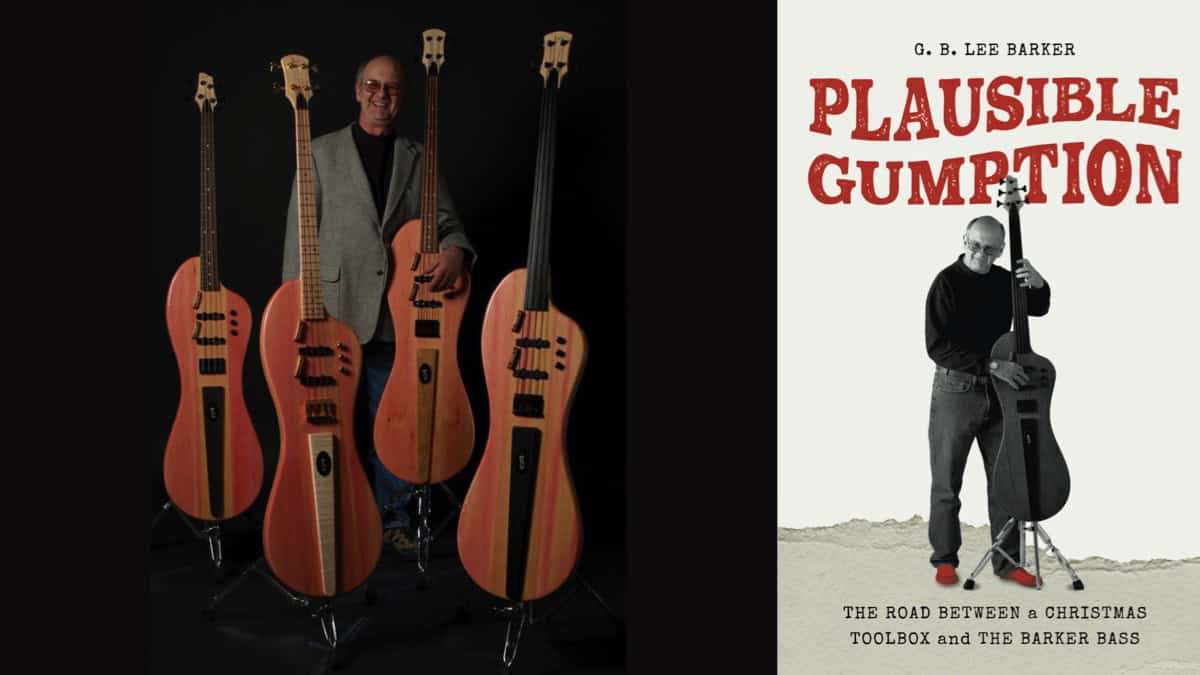
If you are an electric bass player, this is an exciting time to be alive as this relatively new instrument evolves around us. Some creative individuals have taken an active role in this evolution and made giant leaps in their own direction. Lee Barker is one of these inventive people having created the Barker Bass.
Fortunately, Lee is also an excellent writer (among so many talents) and has recently released his book “Plausible Gumption, The Road Between a Christmas Toolbox and The Barker Bass”. This book is a very fun read for everyone and shares a ton of details about Lee’s life in general, his experiences as a musician, a radio host, and a luthier. Now I am fortunate to have the great opportunity to gain even more insights into this renaissance man with this video interview.
Plausible Gumption, The Road Between a Christmas Toolbox and The Barker Bass is available online at Amazon.com
Bass Books
Ultimate Look at Electric Basses from 1930 to Today
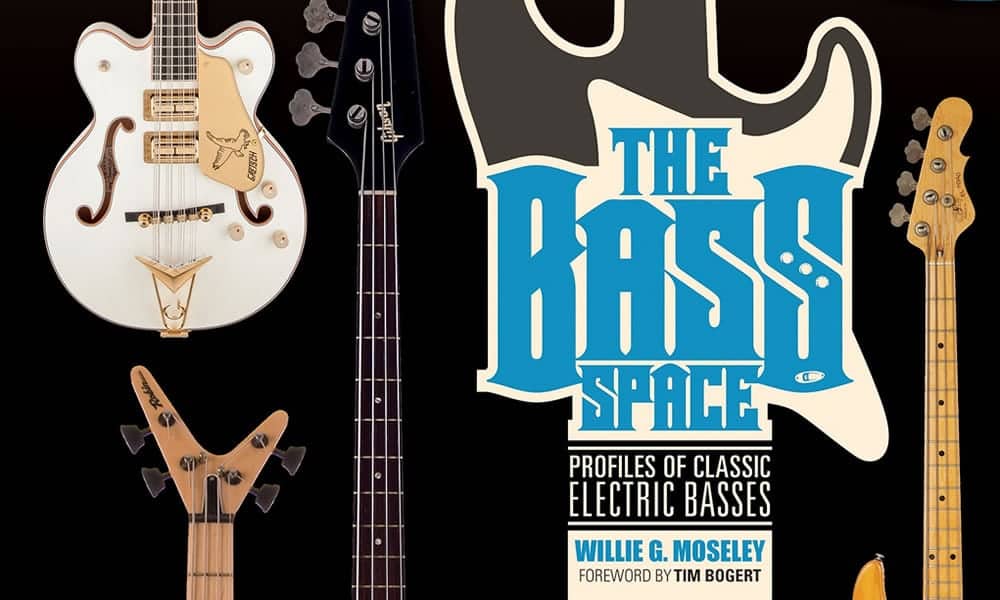
The Bass Space: Profiles of Classic Electric Basses.
The definitive book for lovers of the low-end. Willie G. Moseley, Senior Writer for Vintage Guitar Magazine, profiles more than 100 historic and unique electric bass models from such makers as Alembic, Danelectro, Fender, Gibson, Gretsch, Guild, Hamer, Kramer, Rickenbacker, and many others.
Rare and legendary instruments, from the earliest attempts at amplified basses in the mid-1930s to the cutting-edge instruments of today, are presented in more than 250 color and period photos.
The main feature of this book is the exclusive coverage of historic and one-of-a-kind basses owned and played by such famed musicians as: Bill Black (Elvis Presley), Tim Bogert (Vanilla Fudge), Mark Egan (Pat Metheny Group), John Entwistle (The Who), Paul Goddard (Atlanta Rhythm Section), Bruce Hall (REO Speedwagon), Greg Lake (Emerson, Lake & Palmer), Benjamin Orr (The Cars), Tom Petersson (Cheap Trick), Carl Radle (Derek and the Dominos), Gene Simmons (Kiss), Steve Wariner, and others.
The Bass Space: Profiles of Classic Electric Basses is available online at Amazon.com
Bass Books
Review: The Bastard Instrument, A Cultural History of the Electric Bass by Brian F Wright
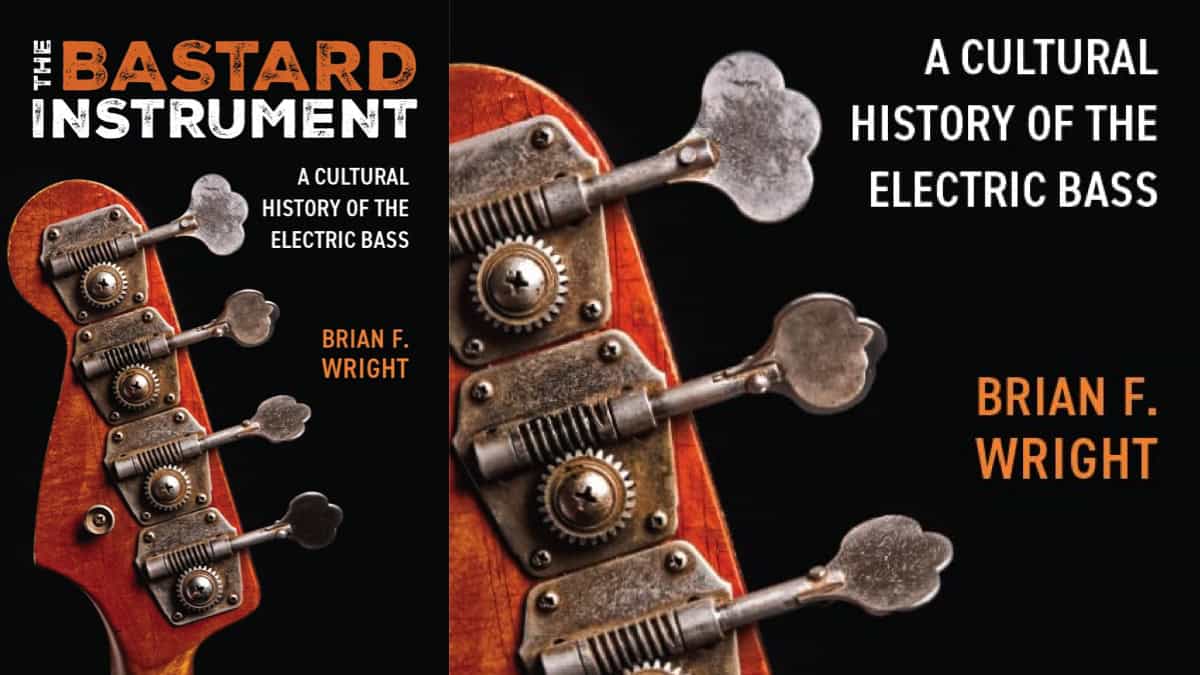
I was intrigued when The Bastard Instrument showed up on my desk… let’s dig in!
When we dive into the history of our beloved instrument, the bass, we find roots that go back as far as the 15th century. This instrument was a member of the violin family and was for the longest time, an acoustic instrument. As the years passed and music changed, there was a need for the instrument to evolve and the electric bass was born.
Comparatively, the electric bass is a relatively new instrument with its earliest appearances dating back to the 1930s and it is exciting to be an electric bass player while this history unfolds around us. Fortunately for us and future generations to come, Professor Brian F. Wright has taken on the herculean task of documenting the trajectory of the electric bass with this excellent book.
The Bastard Instrument presents an extraordinary amount of fine details about the instrument itself, the development of the amplification to handle its output, the pioneers that dared play it, the rapidly evolving music that flourished because of its presence and so much more.
When I first started reading this book, I noticed that it felt a tad academic, like a textbook (it might be one someday) or a doctoral thesis, but to present all this information accurately, this approach is more than appropriate. Another detail that might be a bit of a spoiler is that the book only gets us up to the late ’60s. I was left wanting more as we know that so much has happened in the bass world since that time frame; I hope there is another volume in the works to get us up to the present!
All in all, “The Bastard Instrument, A Cultural History of the Electric Bass” is a must-read for all of us who play electric bass and understand its essential place in music.
I found that there was a lot that I already knew but also quite a bit that I was unaware of. I believe that to know and understand where you are, you must know the history of exactly how you got here.
Highly recommended.
The Bastard Instrument is available at Amazon.com (beginning July 2024)
Bass Books
Review: The Bassist’s Complete Guide to Injury Management, Prevention and Better Health

The Bassist’s Complete Guide to Injury Management, Prevention and Better Health
I have often thought that it would be great if the doctors who delivered us as newborn babies provided us with a user manual to help us navigate through life in the best way possible. Now Dr. Randall Kertz, D.C. has produced a manual specifically designed to address the many possible afflictions plaguing us bass players.
Many of you will remember volumes 1 & 2 of this book and our first review in 2007. The new complete guide combines the two volumes and features over 20 pages of new material including interviews, techniques, and conditions.
If you play bass, you can read this book cover to cover and walk away with a ton of relevant and helpful knowledge. Another option is to search out issues relevant to you specifically (I found quite a few of my own with helpful options). This is possible because the book is very nicely organized into six chapters that address Pain, Conditions, Techniques, Road Issues, Inspirational Q&A with some of the biggest names in the bass community (too many to list here) and finally How to get relief.
All said, this book is essential if you play either electric or upright bass to the point where they should issue you one when you get that first bass in your hands.
Lastly, if you have this book and you have specific questions, Dr. Kertz is readily available through his website, www.drkertz.com. As if that was not enough, he has a wealth of knowledge you can find right here on our website at bassmusicianmagazine.com/author/randallkertz
Get this book… Live long and play bass well into the years! Available on Amazon.com
Bass Books
The Bassist’s Complete Guide to Injury Management, Prevention & Better Health
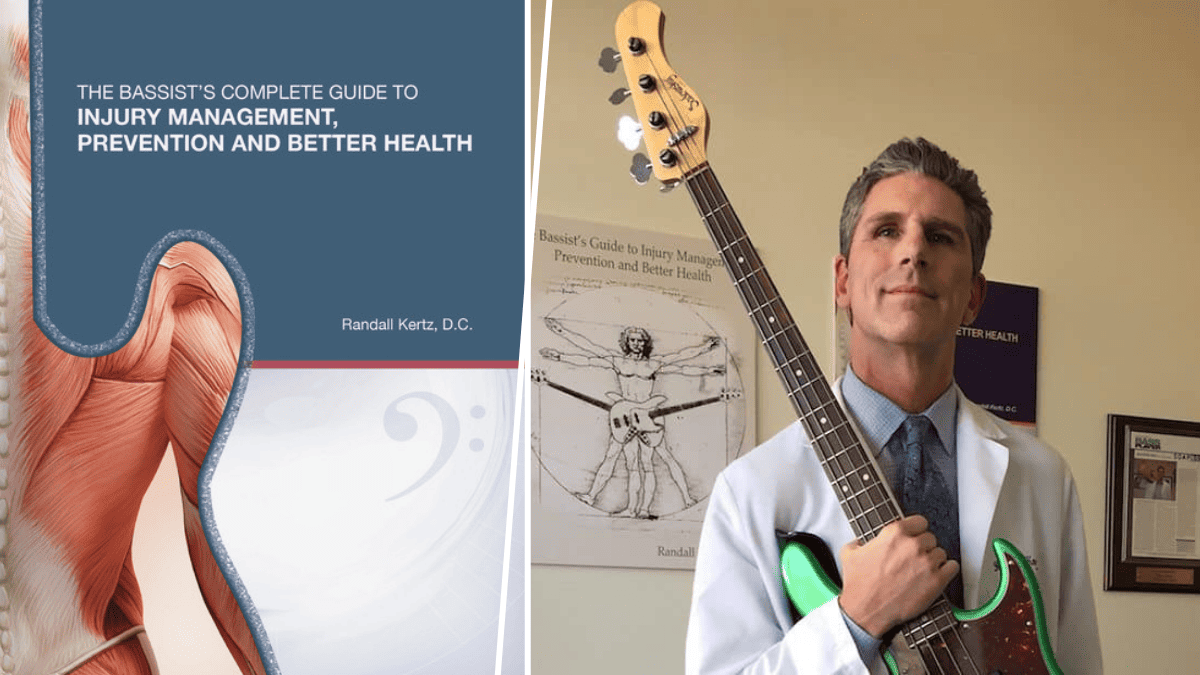
The Bassist’s Complete Guide to Injury Management, Prevention & Better Health is now available!

A compilation of Volumes 1 & 2 of the acclaimed Bassist’s Guide with 20+ pages of new interviews, techniques, and conditions, The Complete Guide puts everything in one convenient place.
Available at Amazon.com and from our friends at Bassline Publishing
Follow Dr. Kertz’s Bass Player Health at Bass Musician Magazine




















